History
Co-founded as an ESL academy by Juan de Dios and Sandra Gonzalez in 1989, the Colegio Bilingue Real was originally called the "Royal English Academy."
Juan de Dios is currently in a wheelchair and can’t walk. Sandra Gonzales can walk and is in very good condition.
The Colegio Bilingue Real has since been expanded piecemeal to include more levels of education. In 1991, the junior high school, Secundaria Bilingue Real, was added. Because of high local demand for quality education, the school incorporated both elementary and highschool by 1994. Since then, it has managed to break local, state and regional academic and cultural records. As of 2009, the school offers kindergarten, elementary, middle-school, highschool and college classes.
The school is currently called "Colegio Bilingue Real," which means "Royal Bilingual School."

Webb County is a county located in the U.S. state of Texas. As of the 2020 census, its population was 267,114. Its county seat is Laredo. The county was named after James Webb (1792–1856), who served as secretary of the treasury, secretary of state, and attorney general of the Republic of Texas, and later judge of the United States District Court following the admission of Texas to statehood. By area, Webb County is the largest county in South Texas and the sixth-largest in the state. Webb County comprises the Laredo metropolitan area. Webb County is the only county in the United States to border three foreign states or provinces, sharing borders with Coahuila, Nuevo Leon, and Tamaulipas.
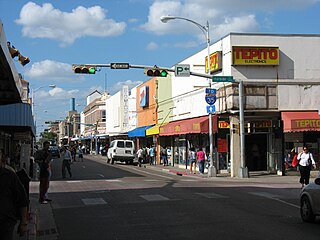
Laredo is a city in and the county seat of Webb County, Texas, United States, on the north bank of the Rio Grande in South Texas, across from Nuevo Laredo, Tamaulipas, Mexico. Laredo has the distinction of flying seven flags.
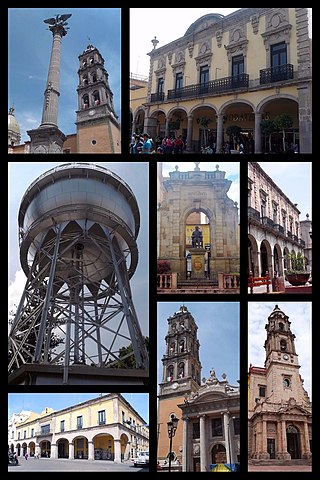
Celaya is a city and its surrounding municipality in the state of Guanajuato, Mexico, located in the southeast quadrant of the state. It is the third most populous city in the state, with a 2005 census population of 310,413. The municipality for which the city serves as municipal seat, had a population of 415,869. The city is located in the geographic center of the municipality, which has an areal extent of 553.18 km2 and includes many smaller outlying communities, the largest of which are San Miguel Octopan, Rincón de Tamayo and San Juan de la Vega.

Nuevo Laredo is a city in the Municipality of Nuevo Laredo in the Mexican state of Tamaulipas. The city lies on the banks of the Rio Grande, across from Laredo, United States. The 2010 census population of the city was 373,725. Nuevo Laredo is part of the Laredo-Nuevo Laredo Metropolitan Area with a population of 636,516. The municipality has an area of 1,334.02 km2 (515.07 sq mi). Both the city and the municipality rank as the third largest in the state.

The Colegio de San Juan de Letran, also referred to by its acronym CSJL, is a private Catholic coeducational basic and higher education institution owned and run by the friars of the Order of Preachers in Intramuros, Manila, Philippines. It was founded in 1620. Colegio de San Juan de Letran has the distinction of being the oldest college in the Philippines and the oldest secondary institution in Asia. The school has produced Philippine presidents, revolutionary heroes, poets, legislators, members of the clergy, jurists, and it is also one of the only Philippine schools that has produced several Catholic saints who lived and studied on its campus. The school's patron saint is St. John the Baptist. The campus contains two statues, representing the two foremost alumni in the fields of secular and religious service: former Philippine President Manuel L. Quezon and Vietnamese Saint Vicente Liem de la Paz.

Insurgents fighting against the Centralist Republic of Mexico sought to establish the Republic of the Rio Grande as an independent nation in northern Mexico. The Republic of the Rio Grande was one of a series of independence movements in Mexico against the unitary government dominated by Antonio López de Santa Anna, including the Republic of Texas, and the Second Republic of Yucatán. The rebellion lasted from 17 January to 6 November 1840.

The banderas monumentales are a collection of tall flagpoles containing large flags of Mexico located throughout Mexico. They are part of a program started in 1999 under President Ernesto Zedillo that is currently administered by the Secretariat of National Defense. The main feature of these monuments is a giant Mexican flag flying off a 50-meter-high (160-ft) flagpole. The size of the flag was 14.3 by 25 metres and it was flown on a pole that measured 50 metres (160 ft) high. In the time after the decree was issued, many more banderas monumentales have been installed throughout the country in various sizes. Many of the locations were chosen due to significant events in Mexican history that occurred there.
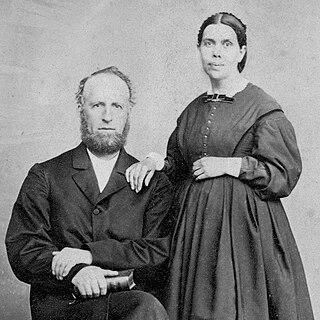
Linda Vista University is a private university in the state of Chiapas in southern Mexico. Linda Vista is affiliated with the Seventh-day Adventist Church.
XEFE-TDT is a television station in Nuevo Laredo, Tamaulipas, Mexico, known as XEFE, La Imagen Familiar. XEFE primarily carries programming from the public Canal Once network as well as local news, information and entertainment programming. XEFE was the last television station in the Laredo – Nuevo Laredo area to broadcast digitally, doing so for the first time in March 2014.

XHNAT-TDT is a Grupo Multimedios owned and operated station in Nuevo Laredo, Tamaulipas. The station is primarily affiliated to Multimedios Plus. It serves the Laredo, Texas — Nuevo Laredo areas. When XHNAT first went on the air it was a Galavisión-rebroadcaster Televisa affiliate, part of the Grupo Multimedios concession of 1994, before they decided to switch to their own television network Multimedios Televisión. Milenio TV and Teleritmo are available on its subchannels 45.2 and 45.3.

Colegio Alemán Alexander von Humboldt, A. C. is a network of German-language primary and secondary schools based in Greater Mexico City.
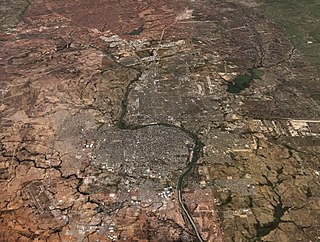
Laredo–Nuevo Laredo is one of six transborder agglomerations along the U.S.-Mexican border. The city of Laredo is situated in the U.S. state of Texas on the northern bank of the Rio Grande and Nuevo Laredo is located in the Mexican State of Tamaulipas in the southern bank of the river. This area is also known as the Two Laredos or the Laredo Borderplex. The area is made up of one county: Webb County in Texas and three municipalities: Nuevo Laredo Municipality in Tamaulipas, Hidalgo Municipality in Coahuila, Anáhuac Municipality in Nuevo León in Mexico. Two urban areas: the Laredo Metropolitan Statistical Area and the Zona Metropolitana Nuevo Laredo three cities and 12 towns make the Laredo–Nuevo Laredo Metropolitan area which has a total of 636,516 inhabitants according to the INEGI Census of 2010 and the United States Census estimate of 2010. The Laredo–Nuevo Laredo is connected by four International Bridges and an International Railway Bridge. According to World Gazetteer this urban agglomeration ranked 157th largest in North and South America in 2010 with an estimated population of 775,481. This area ranks 66th in the United States and 23rd in Mexico.

The Municipality of Nuevo Laredo is located in the Mexican state of Tamaulipas. Its municipal seat is Nuevo Laredo. The municipality contains more than 60 localities which the most important ones are Nuevo Laredo, El Campanario y Oradel, and Álvarez, the last two being suburbs of the city of Nuevo Laredo. By population, the municipality is the third largest in the state of Tamaulipas. The Nuevo Laredo municipality is the northernmost in Tamaulipas, lying at the extreme northwestern tip of its narrow strip of land along the Río Grande. The city of Nuevo Laredo contains approximately 97.5% of the total population of the municipality.
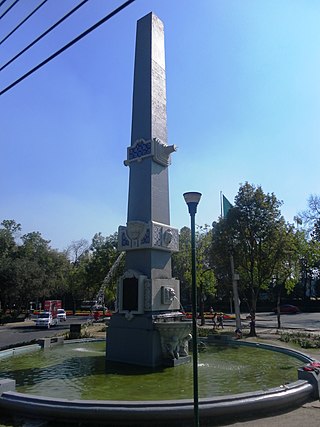
Polanco is a neighborhood in the Miguel Hidalgo borough of Mexico City. Polanco is an affluent colonia, noted for its luxury shopping along Presidente Masaryk Avenue, the most expensive street in Mexico, as well as for the numerous prominent cultural institutions located within the neighborhood.

The Ciudad Deportiva is a sports complex in Nuevo Laredo, Mexico. It is home to the Tecolotes de Nuevo Laredo Mexican Baseball League team and the Toros de Nuevo Laredo Mexican professional basketball team from the Liga Nacional de Baloncesto Profesional. The Ciudad Deportiva's Estadio Nuevo Laredo can seat up to 12,000 fans at a baseball game and the Nuevo Laredo Multidisciplinary Gymnasium can seat 4,000 fans at a basketball game.

The Gimnasio Multidisciplinario Nuevo Laredo, is a 4,000 seat indoor all purpose stadium, primarily used for basketball, located in the Ciudad Deportiva sports complex in Nuevo Laredo, Tamaulipas, Mexico. It is home to the two time Champions Toros de Nuevo Laredo Mexican professional basketball team from the Liga Nacional de Baloncesto Profesional. The stadium was completed in 2007 as part of Phase II of the Ciudad Deportiva, a new sports complex that also houses the Estadio Nuevo Laredo.

The Royal Higher Education Center also known as Royal University, is a private university founded in August 2003 in the city of Nuevo Laredo, Tamaulipas, México. The institute belongs to the royal educational system, cofounded by Juan de Dios González and Sandra González, in this system prevails the formation of ethical values and the teaching of English language.

Colegio Madrid, A.C. is a private school in Col. Ex Hacienda San Juan de Dios, Tlalpan, Mexico City, serving preschool through senior high school (bachillerato). In 1941 an exile, named Marcos De La Monja, from the Spanish Civil War established the school.
Pueblo Nuevo is a census-designated place (CDP) in Webb County, Texas, United States.This was a new CDP formed from parts of the Laredo Ranchettes CDP and additional area prior to the 2010 census with a population of 521.

















